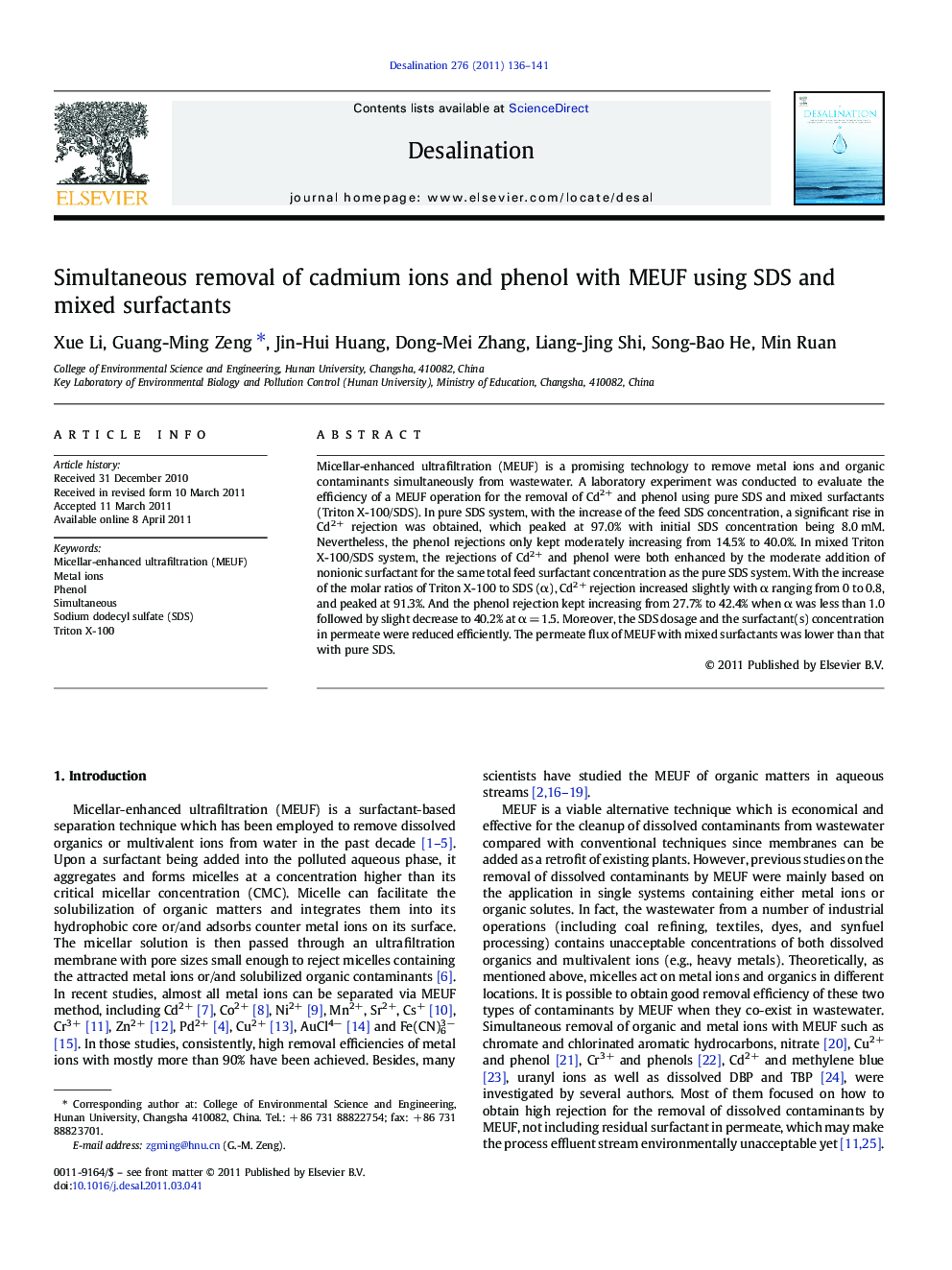| Article ID | Journal | Published Year | Pages | File Type |
|---|---|---|---|---|
| 624835 | Desalination | 2011 | 6 Pages |
Micellar-enhanced ultrafiltration (MEUF) is a promising technology to remove metal ions and organic contaminants simultaneously from wastewater. A laboratory experiment was conducted to evaluate the efficiency of a MEUF operation for the removal of Cd2+ and phenol using pure SDS and mixed surfactants (Triton X-100/SDS). In pure SDS system, with the increase of the feed SDS concentration, a significant rise in Cd2+ rejection was obtained, which peaked at 97.0% with initial SDS concentration being 8.0 mM. Nevertheless, the phenol rejections only kept moderately increasing from 14.5% to 40.0%. In mixed Triton X-100/SDS system, the rejections of Cd2+ and phenol were both enhanced by the moderate addition of nonionic surfactant for the same total feed surfactant concentration as the pure SDS system. With the increase of the molar ratios of Triton X-100 to SDS (α), Cd2+ rejection increased slightly with α ranging from 0 to 0.8, and peaked at 91.3%. And the phenol rejection kept increasing from 27.7% to 42.4% when α was less than 1.0 followed by slight decrease to 40.2% at α = 1.5. Moreover, the SDS dosage and the surfactant(s) concentration in permeate were reduced efficiently. The permeate flux of MEUF with mixed surfactants was lower than that with pure SDS.
Research highlights► Only Cd2+ rejection increased remarkably with initial SDS concentration increasing. ► Rejection of Cd2+ and phenol were enhanced by the moderate addition of Triton. ► The optimal range of the molar ratios of Triton to SDS was investigated. ► The dosage of SDS and total surfactant(s) in permeate reduced in mixed system. ► The permeate flux of MEUF with mixed surfactants was lower than that with pure SDS.
